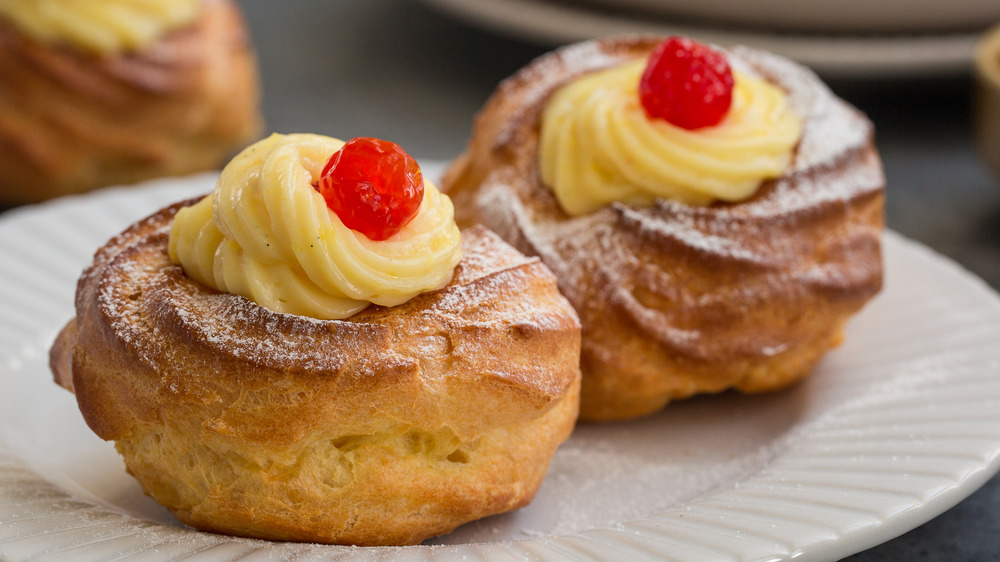What Are Zeppole Di San Giuseppe And When Do You Eat Them?
Sure, everybody knows all about St. Patrick: He drove the snakes out of Ireland, patron saint of that now snake-free country, you celebrate his name day by pinching leprechauns and eating green eggs and ham — or something like that. Did you know, however, that there's yet another saint's day in March, a saint who should arguably be even more of a big deal? St. Joseph, whose feast day is March 19, is not only the patron saint of a much bigger country (according to NationMaster, Italy has 61.48 million people to Ireland's 4.78 million), but was, hello, Jesus' stepdad, not some kind of medieval Orkin man.
Oh, and there's one more reason why St. Joseph's day makes for a much better holiday than does its Irish counterpart — the food! If there's one dish that's universally associated with the St. Patrick's Day, at least here in the U.S., that would be corned beef and cabbage. This involves boiled cabbage, something that requires copious amounts of green beer to wash down (and has some rather unpleasant olfactory aftereffects, as well). St. Joseph, on the other hand, is properly fêted with delicious Italian pastries called zeppole di San Giuseppe.
Why zeppole are associated with St. Joseph
St. Joseph, or San Giuseppe in Italian, was — fun fact (or legend, at any rate) — the original Fred the Baker! No, seriously, one story about St. Joe has it that after the flight into Egypt, it was "time to make the donuts" so he could support his family. According to NonnaBox, the donuts produced by this carpenter-turned-confectioner were a huge hit with even the hard-to-please Romans, so today he is remembered with a donut-like pastry bearing his name.
The zeppole made in St. Joseph's honor, however, are more like cream puffs than any donut sold by Dunkin'. They are made with choux (a type of puff) pastry and baked or deep-fried, then stuffed with a sweet, creamy filling. While the NonnaBox recipe calls for pastry cream, Milwaukee's Peter Sciortino Bakery offers them with either a custard filling or one made of sweetened ricotta, similar to that used in cannoli.
The final cherry on top with these zeppole is just that — a maraschino or candied cherry, either sweet or sour. While the cherry may be there simply for decorative purposes, it could possibly be a reference to the medieval myth/Christmas carol where Joseph, pre-nativity, gets punked by a cherry tree. It seems he must have made his peace with that feisty fruit, however, which is a good thing since zeppole di San Giuseppe wouldn't look quite so pretty without them.

